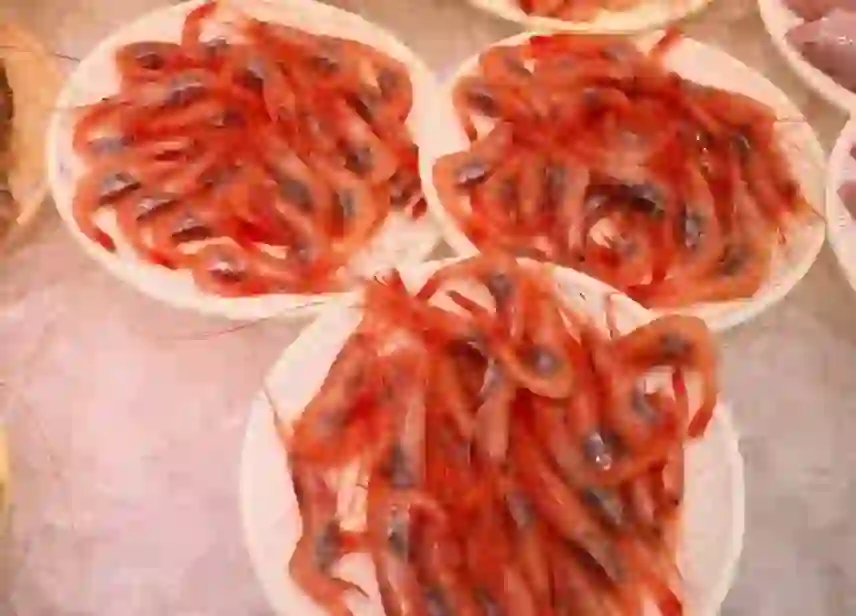
Shrimp
Shrimp
Shrimp
What do you imagine when you hear the word “shrimp”? Some people may imagine food such as shrimp sushi, while others may imagine pet shrimp for viewing. The fact that different people imagine different types of shrimp is evidence that there are many different types of shrimp around us. In fact, there are about 3,000 species of shrimp in the world. It’s surprising how many species there are. Although shrimp live close to us, we may not know much about them. Let’s explore more about shrimp together!
Shrimp Basic Infomation
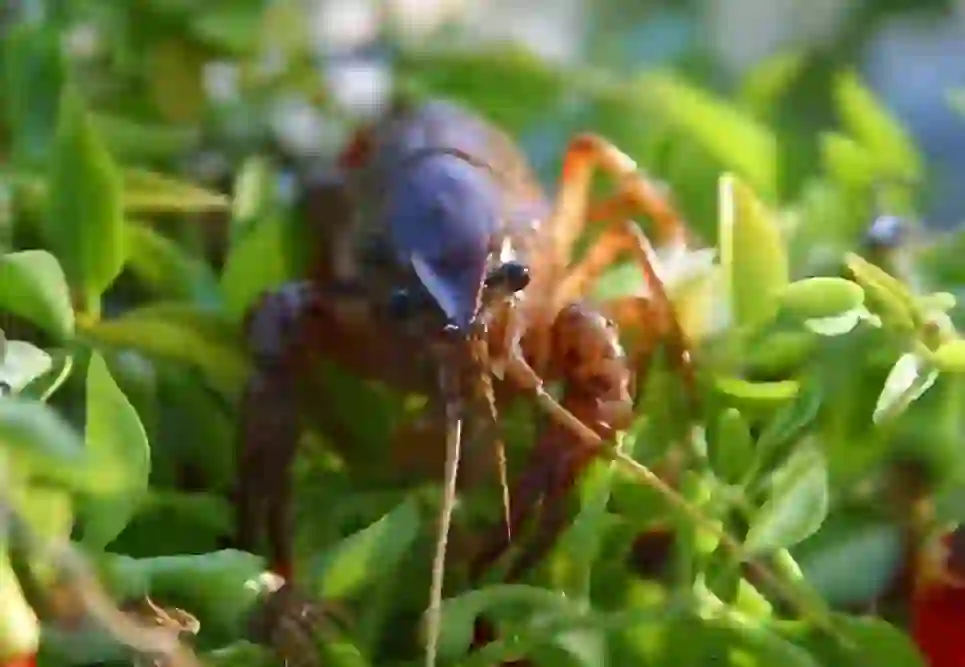
Arthropoda−Crustacea−Malacostraca−Decapoda. Largest species Ornate spiny lobster Length : about 50-60cm Weight : about 5kg. Smallest species Hawaiian Red Shrimp Length : about 7mm Weight : not clear. Shrimp live in a wide range of aquatic environments around the world. They usually hide in places such as rocky areas, aquatic plants, and seaweed.
When looking for shrimp, it’s a good idea to focus on places where they can hide. There are about 3,000 species of shrimp in the world, which can be divided into two main groups: freshwater shrimp and saltwater shrimp. Freshwater shrimp live in freshwater rivers and swamps and estuaries. Specific species include freshwater shrimps, crayfishs, freshwater prawns family, and Freshwater shrimps family. Many species are relatively easy to breed and are commonly sold as pets.
Saltwater shrimp are shrimp that live in saltwater areas. They are characterized by a wide range of species because they live in shallow to deep waters. Specific species include Japanese spiny lobster, lobster, kuruma prawn, and sakura shrimp. This includes the shrimp we eat.
How do shrimp reproduce and increase their numbers? Because there are many types of shrimp, we will focus on “freshwater shrimp,” which can be caught in Japan’s natural environment, and explain the breeding method in detail. Freshwater shrimp breed from spring to summer when the temperature is warm. At that time, the female shrimp sheds its skin and emits pheromones. The male is attracted by the pheromones and mates with the female. After mating, the female stops emitting pheromones.
It takes about 2-3 hours to lay eggs, and each time they lay eggs, they lay about 35-130 eggs one by one. The mother lives with the eggs attached to her belly until they hatch. It takes 2-4 weeks for them to hatch.
It’s difficult to confirm if baby shrimp have been born because they are very small at birth. Even if many babies are born, only a few will survive until adulthood because they are eaten by fish or other predators. That’s why they lay so many eggs and try to leave as many offspring as possible.
When keeping animals, it is necessary to follow the laws established by each country. This time, I will introduce whether it is possible to keep shrimp at home in Japan. Shrimp are popular as pets for viewing. They are very cute when they use their small legs to search for food or jump around in the water.
You can watch them for hours without realizing it, so it’s understandable that you would want to keep them. There are many types of shrimp with rich color variations, including shrimp that clean the aquarium. Let’s compare the differences and think about which shrimp can be kept. Let’s explore how to keep shrimp together!
Freshwater shrimp. ・Amano Shrimp. ・Freshwater shrimp. (Neocaridina denticulata.) ・Yellow Shrimp. ・Bee shrimp. ・Cardinal Shrimp.
For beginners, freshwater shrimp are said to be easier to keep. If you’re worried about keeping them, starting with freshwater shrimp is one way to go. Saltwater shrimp. ・Scarlet Cleaner Shrimp. ・Scarlet cleaner shrimp. ・Hingebeak shrimp. ・Harlequin shrimp. ・Cleaner shrimp. ・Pacific cleaner shrimp.
Saltwater shrimp are difficult to keep because they are sensitive to water quality and temperature. Be sure to check the breeding method and consider whether you can keep them. By the way, have you heard of “pixie shrimp”? It’s also called “Holo holo shrimp.” Pixie shrimp are so small that they can be kept in a bottle. They don’t need food because they eat bacteria and moss in the bottle. If the water level drops, just add some water. Even if you’re not confident in taking care of them or if you’re away from home a lot, you can keep them. If you’re interested, please look it up.
Shrimp are omnivores that can eat anything. They eat moss, aquatic plants, and water stains in the aquarium. If you keep tropical fish with them, they will also eat the leftovers. If you keep only shrimp, give them special artificial feed. When feeding them, give them a small amount several times a day.
・Aquarium. Determine the size of the aquarium based on the number of shrimp you want to keep. If you have a small number of shrimp, you can keep them in a small aquarium. ・Aeration. Install it to ensure that oxygen circulates even in shrimp at the bottom of the aquarium. It plays a role in preventing oxygen deficiency, which is a common cause of shrimp death. ・Filter with sponge. If you use a normal filter, shrimp may be sucked in because they are small. The sponge protects them from being sucked in. ・Cooling fan & heater. The water temperature changes depending on the season. Use a cooling fan or heater to adjust it to the appropriate temperature. ・Water thermometer. Use a water thermometer to check the water temperature in the aquarium and keep it at an appropriate temperature. 【Environment required for freshwater shrimp.】 ・Aquatic plants. There are many types of aquatic plants, but recommended ones for freshwater shrimp are hornwort, anacharis densa, Glossostigma elatinoides, and willow moss. ・Substrate. Soil is suitable for breeding freshwater shrimp. 【Environment required for saltwater shrimp.】 ・Seaweed. Recommended seaweed types for saltwater shrimp are chlorodesmis fastigiata and Caulerpa serrulata. ・Substrate. Coral sand is recommended for breeding saltwater shrimp. If you install rocks called live rock, they can also become hiding places for shrimp. ・Artificial seawater. This is the most important environment for saltwater shrimp. Make seawater while keeping the amount in check.
1)Be careful with the first water adjustment. Shrimp are very sensitive to changes in water quality. Take your time and adjust the water slowly. 2)Manage the water temperature. The ideal water temperature for shrimp is 20-25℃. Shrimp are not good with high water temperatures, so try to keep the temperature appropriate. 3)Check carefully for pesticide-free aquatic plants. Shrimp have low drug resistance and can die if drugs are attached to them. Therefore, be sure to check if the aquatic plants are grown without pesticides. 4)Be careful not to let the shrimp escape. Shrimp may occasionally escape from the aquarium. The cause is that the water quality is not good. Manage the water quality well and create an environment where they do not escape. 5)Be careful not to become oxygen deficient. The most common cause of shrimp death is oxygen deficiency. Summer and night are times when oxygen becomes scarce. As a countermeasure, installing aeration will improve it. When shrimp gather on the surface of the water, it is a sign of oxygen deficiency. Be careful not to miss it.
Shrimp Q&A

A pet that is soothing to watch.
When keeping animals, it is necessary to follow the laws established by each country. This time, I will introduce whether it is possible to keep shrimp at home in Japan. Shrimp are popular as pets for viewing. They are very cute when they use their small legs to search for food or jump around in the water.
You can watch them for hours without realizing it, so it’s understandable that you would want to keep them. There are many types of shrimp with rich color variations, including shrimp that clean the aquarium. Let’s compare the differences and think about which shrimp can be kept. Let’s explore how to keep shrimp together!

What types of shrimp can be raised?
Freshwater shrimp. ・Amano Shrimp. ・Freshwater shrimp. (Neocaridina denticulata.) ・Yellow Shrimp. ・Bee shrimp. ・Cardinal Shrimp.
For beginners, freshwater shrimp are said to be easier to keep. If you’re worried about keeping them, starting with freshwater shrimp is one way to go. Saltwater shrimp. ・Scarlet Cleaner Shrimp. ・Scarlet cleaner shrimp. ・Hingebeak shrimp. ・Harlequin shrimp. ・Cleaner shrimp. ・Pacific cleaner shrimp.
Saltwater shrimp are difficult to keep because they are sensitive to water quality and temperature. Be sure to check the breeding method and consider whether you can keep them. By the way, have you heard of “pixie shrimp”? It’s also called “Holo holo shrimp.” Pixie shrimp are so small that they can be kept in a bottle. They don’t need food because they eat bacteria and moss in the bottle. If the water level drops, just add some water. Even if you’re not confident in taking care of them or if you’re away from home a lot, you can keep them. If you’re interested, please look it up.
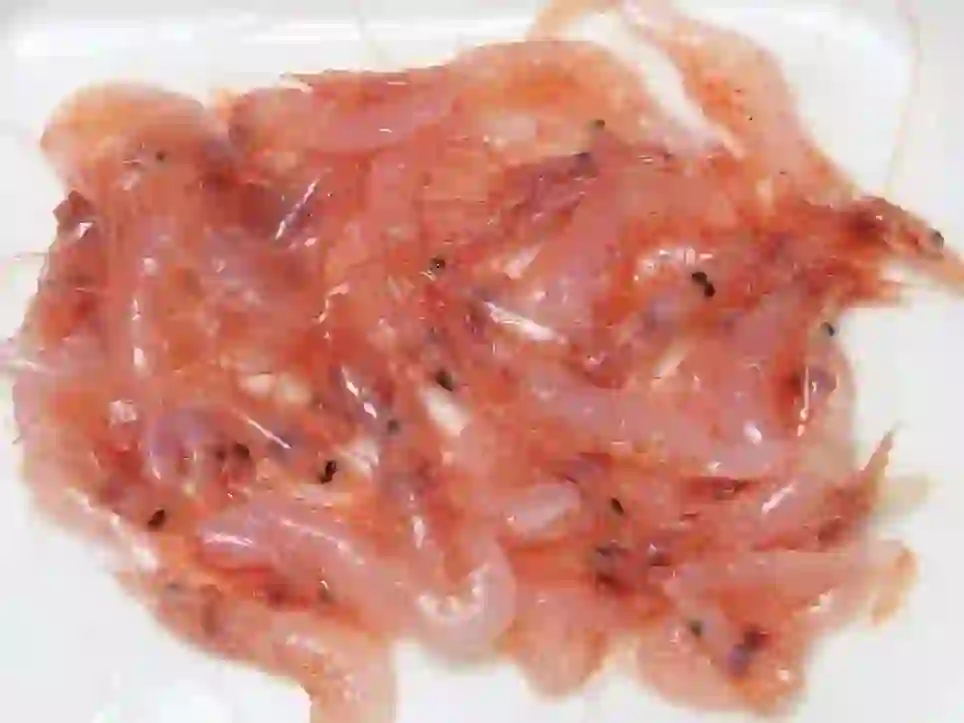
What should I feed them?
Shrimp are omnivores that can eat anything. They eat moss, aquatic plants, and water stains in the aquarium. If you keep tropical fish with them, they will also eat the leftovers. If you keep only shrimp, give them special artificial feed. When feeding them, give them a small amount several times a day.
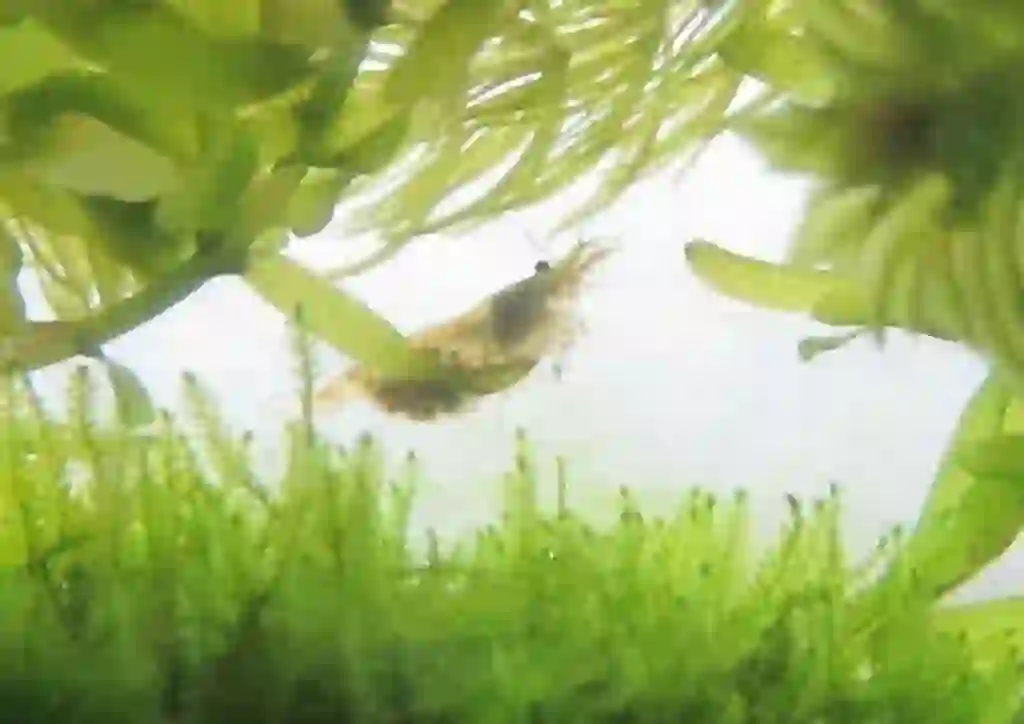
About the breeding environment.
・Aquarium. Determine the size of the aquarium based on the number of shrimp you want to keep. If you have a small number of shrimp, you can keep them in a small aquarium. ・Aeration. Install it to ensure that oxygen circulates even in shrimp at the bottom of the aquarium. It plays a role in preventing oxygen deficiency, which is a common cause of shrimp death. ・Filter with sponge. If you use a normal filter, shrimp may be sucked in because they are small. The sponge protects them from being sucked in. ・Cooling fan & heater. The water temperature changes depending on the season. Use a cooling fan or heater to adjust it to the appropriate temperature. ・Water thermometer. Use a water thermometer to check the water temperature in the aquarium and keep it at an appropriate temperature. 【Environment required for freshwater shrimp.】 ・Aquatic plants. There are many types of aquatic plants, but recommended ones for freshwater shrimp are hornwort, anacharis densa, Glossostigma elatinoides, and willow moss. ・Substrate. Soil is suitable for breeding freshwater shrimp. 【Environment required for saltwater shrimp.】 ・Seaweed. Recommended seaweed types for saltwater shrimp are chlorodesmis fastigiata and Caulerpa serrulata. ・Substrate. Coral sand is recommended for breeding saltwater shrimp. If you install rocks called live rock, they can also become hiding places for shrimp. ・Artificial seawater. This is the most important environment for saltwater shrimp. Make seawater while keeping the amount in check.
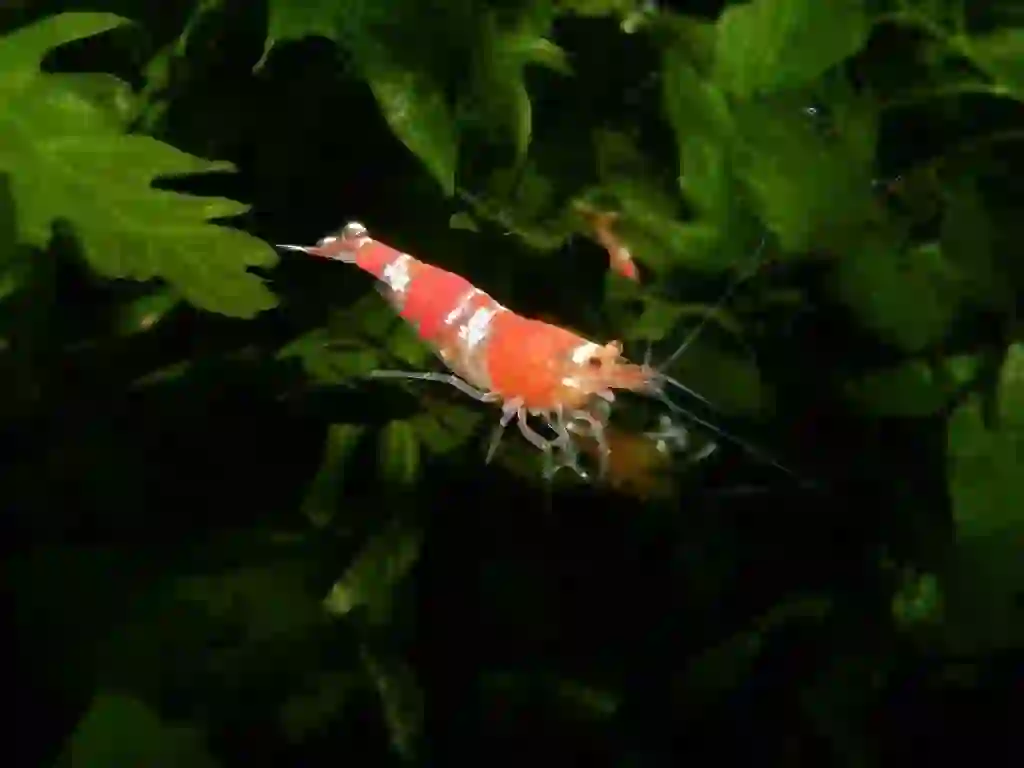
There are 5 things to keep in mind when breeding!
1)Be careful with the first water adjustment. Shrimp are very sensitive to changes in water quality. Take your time and adjust the water slowly. 2)Manage the water temperature. The ideal water temperature for shrimp is 20-25℃. Shrimp are not good with high water temperatures, so try to keep the temperature appropriate. 3)Check carefully for pesticide-free aquatic plants. Shrimp have low drug resistance and can die if drugs are attached to them. Therefore, be sure to check if the aquatic plants are grown without pesticides. 4)Be careful not to let the shrimp escape. Shrimp may occasionally escape from the aquarium. The cause is that the water quality is not good. Manage the water quality well and create an environment where they do not escape. 5)Be careful not to become oxygen deficient. The most common cause of shrimp death is oxygen deficiency. Summer and night are times when oxygen becomes scarce. As a countermeasure, installing aeration will improve it. When shrimp gather on the surface of the water, it is a sign of oxygen deficiency. Be careful not to miss it.
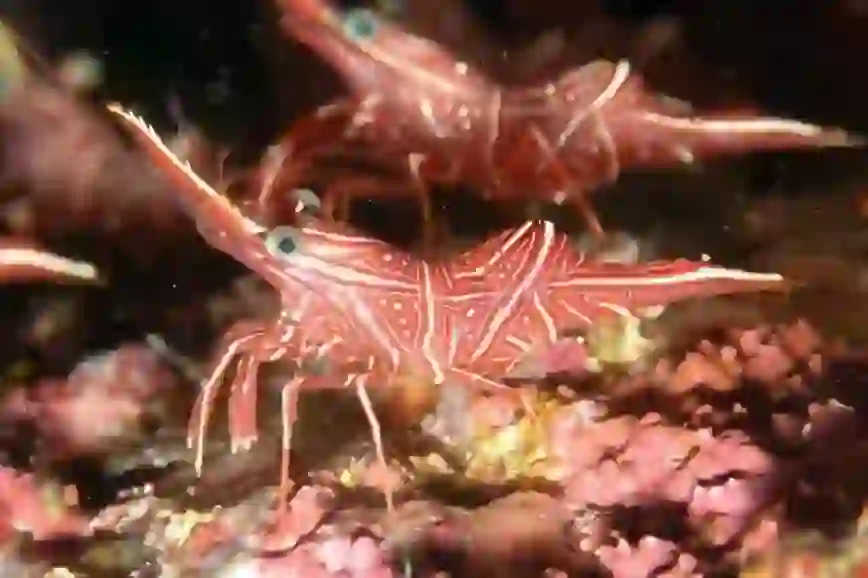
Where does shrimp get its name?
In English, it is called ‘shrimp’, but in Japanese it is called ‘ebi’. This time, I will introduce why it is called ‘ebi’ in Japanese and its origin. There are several theories about the name ‘ebi’. Among them, one of the most common theories is related to a certain fruit. That fruit is ‘grape’.
In the past, grapes were called ‘ebikazura’. From there, the reddish-purple color similar to grapes was named ‘ebicolour’. Since ebi was a creature with ebicolour, it came to be called ‘ebi’. We found out that the origin of the name ‘ebi’ was from its color. There is also a theory that fishing is related. Ebi has been used as bait for fishing since ancient times. From there, it was named ‘ebi’ as a creature with an ‘e’ and ‘bi’. By the way, do you know that there are two kanji characters for ‘ebi’? The kanji character commonly used is ‘ebi’. The origin of the kanji character comes from its appearance with long beards and bent waist like an old man. The other kanji character is also ‘ebi’. This kanji character feels less familiar because it is rarely used. It was named ‘ebi’ using insect editing for the name of a mysterious creature in China. Since ebi was also an unknown creature, it came to be called ‘ebi’ using insect editing. We introduced two kanji characters for ebi. However, you still don’t know how to use kanji characters well? I will explain the points to use them easily. Use the one with ‘ebi’ for species of ebi that walk around on the seabed. Specific species include Japanese spiny lobster.
Use the one with ‘ebi’ for species of ebi that swim in the sea. Specific species include Kuruma prawn and Sakura shrimp.
Now you know how to use them clearly. It was surprising that it could be judged by ebi’s movement method. It seems better to know about simple ebi ecology.

Why do shrimp live there?
Shrimps live hiding in various places such as rocky areas, water grasses, seaweeds, etc. They don’t have a fixed habitat because they keep moving. Why do shrimps live hiding? It is to protect themselves from predators. Shrimps never know when they will be targeted by predators. That’s why they chose to hide to protect themselves.

What do shrimp eat?
Shrimps are omnivores that can eat anything to survive. In nature, they live by eating moss, microorganisms, and fish carcasses. It is difficult to prepare various foods for shrimps kept in captivity like wild shrimps. Speaking of food, they live by eating moss, water grasses, water stains, artificial feed, etc. in the aquarium. Wild shrimps have a wider variety of food than captive shrimps.
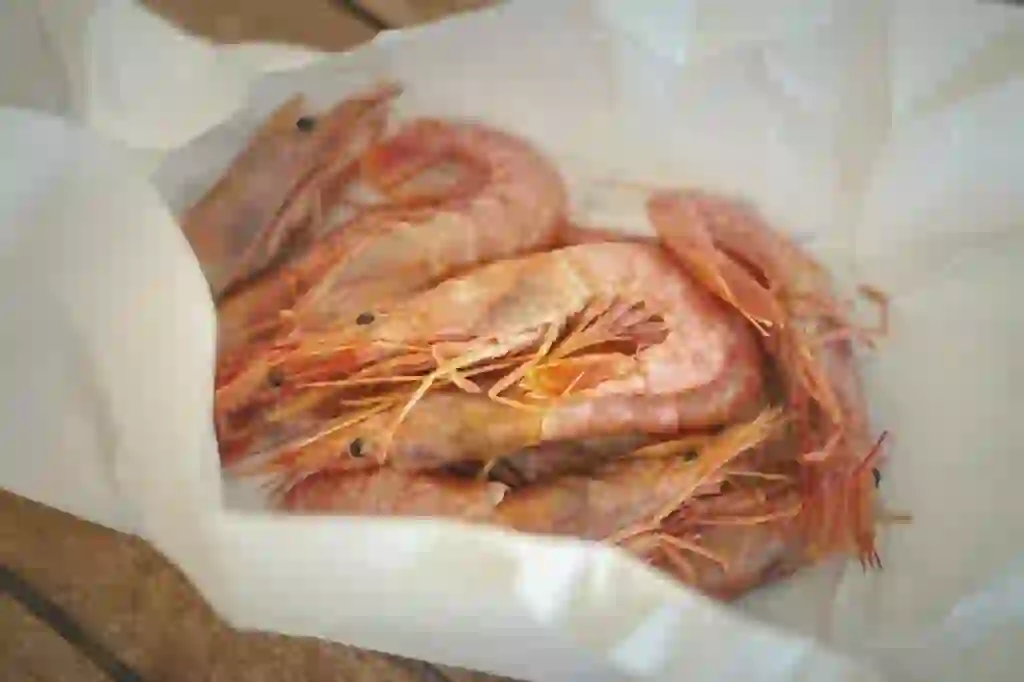
How do shrimp breathe?
Shrimps live in water and breathe through their gills. However, you can’t see anything like fish gills on shrimps. Where are shrimp gills hiding? Actually, shrimp gills are fine hairs inside the shell around the chest. By taking in water with those hairs, they can breathe through their gills. As long as their gills are wet, shrimps can survive. Have you ever bought high-end shrimps and found sawdust in the package? Actually, sawdust is necessary to transport live shrimps. Sawdust has three roles. 1)Cushioning to prevent damage. To prevent shrimps from hurting each other by struggling, sawdust is laid out and fixed. 2)Keeping the temperature constant. It keeps the temperature inside the container from rising during transportation. 3)Moisturizing. Sawdust has high moisturizing properties and keeps shrimps from drying out by retaining moisture. Shrimps can breathe as long as there is even a little moisture near their gills. By having shrimps and sawdust together, we found that shrimps can be delivered fresh while still alive. It’s amazing that they can survive as long as there is moisture even outside of water. It makes you feel the strength of shrimp’s vitality.
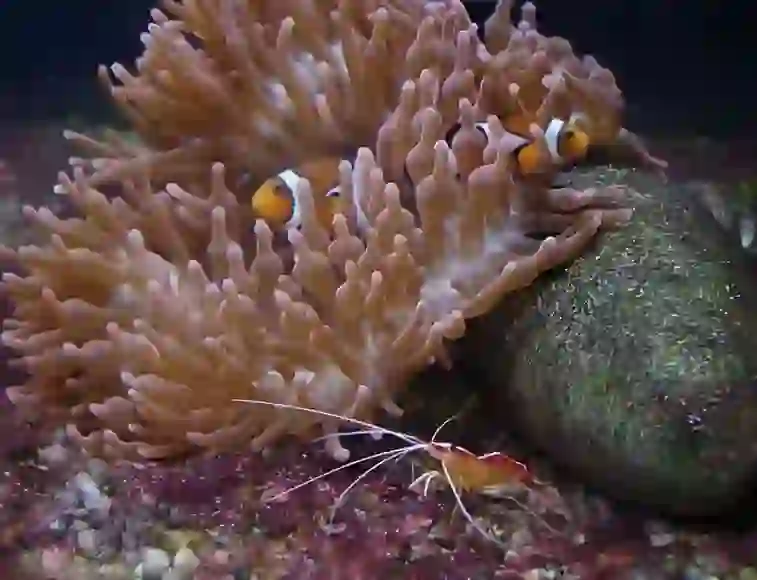
Is it true that there are shrimp that change sex?
There really are shrimps that change sex. They are called “Alaskan pink shrimp”. You may know them as “Pink prawn”. All Pink prawns are born male. They change sex to female at around 6 years old. Why do they become female as they get older? It is related to the environment in which Pink prawns live. Pink prawns live in the deep sea and must survive in a harsh environment with little food. Raising children is an even more burdensome task. Therefore, it was judged that a shrimp with strong vitality that survived for many years could also withstand child-rearing. Shrimps that have changed sex to female mate with young males aged 4-5. Males aged 1-3 do not participate in mating. Occasionally, males change sex to female before they turn 5. The reason for the early timing is that there are not enough females. If there are not enough females, it can affect reproduction. Therefore, they judge for themselves and become female early so that they do not get into such a situation. It’s amazing how adaptable Pink prawns are.
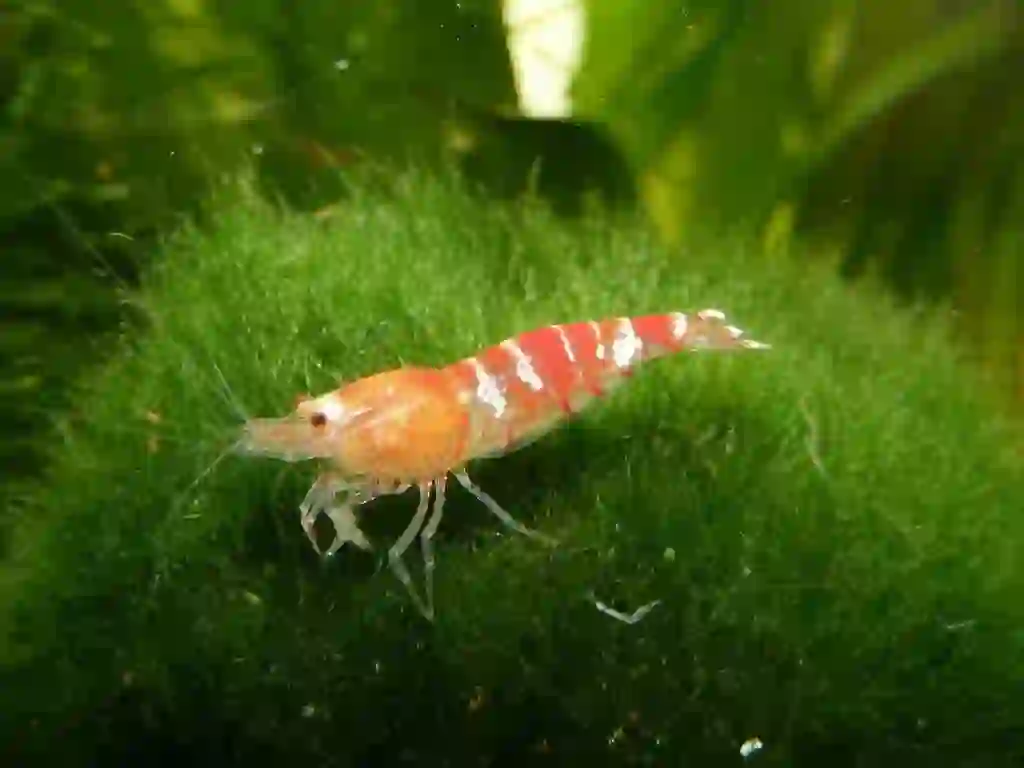
How long does a shrimp live?
The lifespan of shrimps is influenced by two factors: species and environment. For shrimps that can be kept as pets, the average lifespan is said to be about 1-2 years. Depending on the breeding environment, they can live for about 10 years. Do you know which shrimp lives the longest? It’s called “Lobster”. Lobsters are said to be immortal. In fact, they just live a long time. Lobsters can live for decades. The oldest captured lobster was about 140 years old. Compared to shrimps with a lifespan of 1-2 years, Lobsters are known to live quite long.

Would you like to become a part of the 'Animalbook.jp'?
Turn your knowledge into Q&A and share it with the world. ※Publication will be activated after purchase. Let's share information together!
Shrimp Type of List
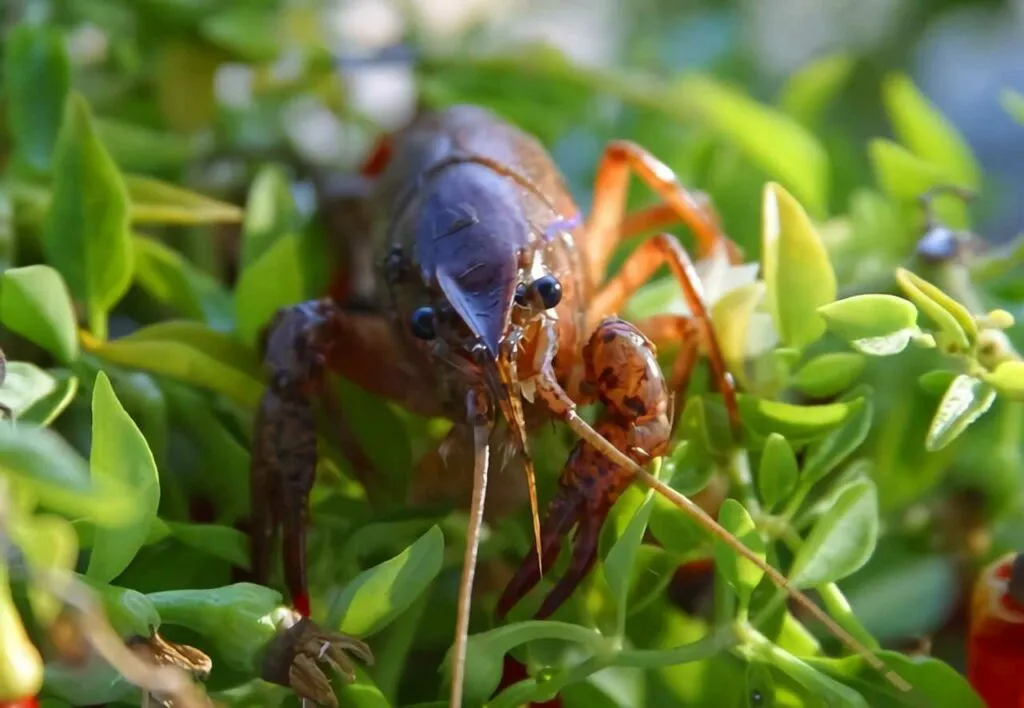
Penaeidae. 【Metapenaeopsis.】 ・Red rice prawn. ・Metapenaeopsis dalei. ・Tora velvet shrimp. ・Alaskan pink shrimp. ・Metapenaeopsis mogiensis. 【Litopenaeus.】 ・Whiteleg shrimp. 【Melicertus.】 ・Western king prawn. 【Penaeus Fabricius.】 ・Black tiger prawn. ・Brown tiger prawn. ・Green tiger prawn. 【Marsupenaeus.】 ・Kuruma prawn. ・Terao kuruma prawn. 【Fenneropenaeus.】 ・Fleshly prawn. ・Indian white prawn. ・Banana Prawn. 【Parapenaeus.】 ・Parapenaeus fissurus. ・Parapenaeus fissuroides. ・Lancer rose shrimp. ・Parapenaeus sextuberculatus. 【Trachysalambria.】 ・Trachysalambria longipes. ・Southern rough shrimp. ・Trachysalambria nansei. 【Parapenaeopsis.】 ・Microprosthema lubricum. 【Penaeopsis.】 ・Penaeopsis eduardoi. 【Metapenaeus.】 ・Endeavour Prawn. ・Shiba shrimp. ・Green tail prawn. ・Offshore greasyback prawn. 【Heteropenaeus.】 ・Heteropenaeus longimanus. Nephropidae. 【Metanephrops.】 ・Japanese lobster. ・Sagami lobster. ・Red-banded lobster. 【Homarus.】 ・American Lobster. ・Europran lobster. 【Nephropidae.】 ・Indian Ocean Lobsterette. ・Nephropsis holthuisi. 【Nephrops.】 ・Norway lobster. Galatheidae. 【Agononida.】 ・Agononida incerta. 【Cervimunida.】 ・Cervimunida princeps. 【Galathea.】 ・Galathea orientalis. 【Munidopsis.】 ・Munidopsis cylindrophthalma. ・Squat lobster. 【Munida.】 ・Munida andamanica. ・Munida kuboi. Pandalidae. 【Plesionika.】 ・Plesionika izumiae. ・Plesionika grandis. ・Golden shrimp. ・Plesionika indica. ・Ortmann's striped shrimp. ・Plesionika semilaevis. 【Pandalus.】 ・Pandalus ivanovi. ・Pandalus prensor. ・Spot prawn. ・Pandalus teraoi. ・Coonstripe Shrimp. ・Hokkai shrimp. ・Alaskan pink shrimp. ・Deepwater prawn. ・Botan shrimp. 【Heterocarpus.】 ・Mino nylon shrimp. ・Heterocarpus dorsalis. ・Heterocarpus hostilis. ・Smooth nylon shrimp. ・Heterocarpus sibogae. 【Pandalopsis.】 ・Prawn. ・Pandalopsis pacifica. ・Morotoge shrimp. 【Anachlorocurtis.】 ・Anachlorocurtis commenslis. 【Miropandalus.】 ・Gorgonian pandalid shrimp. Palaemonidae. 【Conchodites.】 ・Emperor shrimp. ・Conchodytes meleagrinae. 【Palaemon.】 ・Gladiator prawn. ・Exopalaemon Holthuis. ・Lake prawn. ・Palaemon gravieri. 【Brachycarpus.】 ・Bracbycarpus biunguiculatus. 【Leander.】 ・Long nose shrimp. ・Gulf-weed shrimp. 【Urocaridell.】 ・Cleaner shrimps. ・Cleaner shrimp species. 【Macrobrachium.】 ・Giant freshwater prawn. ・Giant river prawn. ・Freshwater Prawn. ・Macrobrachium formosense. 【Holthuis.】 ・Black coral shrimp. 【Periclimenella.】 ・Periclimenella spinifera. 【Exoclimenella.】 ・Exoclimenella maldivensis. 【Leptomenaeus.】 ・Leptomenaeus dolichosternum. 【Periclimenes.】 ・Periclimenes galene. 【Periclimenes.】 ・Emperor Shrimp. ・Glass anemone shrimp. ・Crinoid commensal shrimp. ・Periclimenes ornatus. ・Starfish shrimp. ・Periclimenes diversipes. ・Periclimenes inornatus. 【Laomenes.】 ・Laomenes amboinensis. 【Ancylomenes.】 ・Ancylomenes venustus. ・Ancylomenes magnificus. ・Periclimenes sarasvati. ・Periclimenes venustus. ・Dofleinia shrimp. ・Periclimenes adularans. 【Cuapetes.】 ・Emperor shrimp.. ・Cuapetes nilandensis. ・Cuapetes lacertae. 【Araiopontonia.】 ・Araiopontonia odontorhyncha. 【Hamodactylus.】 ・Hamodactylus noumeae. 【Metapontonia.】 ・Metapontonia fungiacola. 【Thaumastocaris.】 ・Thaumastocaris streptopus. 【Pontonides.】 ・Pontonides sp. 【Dasycaris.】 ・Wire Coral Shrimp. 【Periclimenes.】 ・Black coral shrimp. 【Stegopontonia.】 ・Purple Urchin Shrimp. 【Tuleariocaris.】 ・Tuleariocaris zanzibarica. 【Pliopontonia.】 ・Pliopontonia harazakii. 【Harpiliopsis.】 ・Harpiliopsis depressa. 【Coralliocaris.】 ・Coralliocaris graminea. ・Coralliocaris superba. 【Jocaste.】 ・Jocaste lucina. 【Harpilius.】 ・Harpilius lutescens. 【Philarius.】 ・Philarius imperialis. ・Philarius imperialis. Crangonidae. 【Syncrangon.】 ・Metacrangon angusticauda. 【Pontocaris.】 ・Pontocaris pennata. ・Crangon affinis. 【Crangon.】 ・Crangon amurensis. ・Crangon uritai. ・Crangon cassiope. ・Crangon hakodatei. ・Crangon dalli. 【Sclerocrangon.】 ・Sculputured shrimp. 【Argis.】 ・Argis ochotensis. ・Mosa shrimp. ・Argis hozawai. 【Neocrangon.】 ・Neocrangon sagamiensis. ・Neocrangon communis. 【Paracrangon.】 ・Horned shrimp. 【Philocheras.】 ・Philocheras coralliophilus. Solenoceridae. 【Pleoticus】 ・Argentine Red Shrimp. 【Solenocera.】 ・Solenocera acuminata. ・Solenocera pectinata. ・Solenocera comata. ・Chinese mud shrimp. ・Solenocera koelberi. 【Hadropenaeus.】 ・Hadropenaeus lucasii. 【Haliporoides.】 ・Jack-knife shrimp. 【Hymenopenaeus.】 ・Hymenopenaeus halli. ・Hymenopenaeus aequalis. Psalidopodidae. 【Psalidopus.】 ・Psalidopus huxleyi. Sicyoniidaae. 【Sicyonia.】 ・Sicyonia lancifer. ・Sicyonia inflexa. ・Sicyonica japonica. Hippolytidae. 【Eualus.】 ・Eualus middendorffii. ・Eualus biunguis. ・Eualus leptognathus. 【Lebbeus.】 ・Lebbeus longipes. ・Spiny lebbeid. ・Lebbeus speciosus. ・Lebbeus brandti. ・Lebbeus grandimanus. 【Heptacarpus.】 ・Heptacarpus rectirostris. ・Heptacarpus geniculatus. ・Heptacarpus pandaloides. ・Latreutes planirostris. ・Latreutes acicularis. ・Heptacarpus futilirostris. ・Heptacarpus camtschaticus. 【Spirontocaris.】 ・Spirontocaris spina. ・Spirontocaris ochotensis. ・Spirontocaris prionota. 【Lysmata.】 ・Peppermint shrimp. ・Scarlet cleaner shrimp. ・Blood red fire shrimp.. 【Birulia.】 ・Birulia kishinouyei. ・Birulia sachalinensis. 【Lysmata.】 ・Scarlet cleaner shrimp. ・White-socks shrimp. ・Peppermint Shrimp. 【Saron.】 ・Eyespot Shrimp. ・Marbled shrimp. 【Thor.】 ・Thor amboinensis. 【Thinora.】 ・Thinora maldivensis. 【Alcyonohippolyte.】 ・Alcyonohippolyte commensalis. ・Alcyonohippolyte maculat. ・Alcyonohippolyte dossena. 【Hippolyte.】 ・Hippolyte ventricosa. 【Lysmatella.】 ・Striped cleaner-shrimp. 【Latreutes.】 ・Latreutes planirostris. 【Tozeuma.】 ・Banded Tozeuma Shrimp. Scyllaridae. 【Thenus.】 ・Bay lobster. 【Ibacus.】 ・Fan lobster. ・Smooth fan lobster. 【Eduarctus.】 ・Striated locust lobster. 【Scyllarides.】 ・Scyllarine Lobster. ・Ridgeback Slipper Lobster. ・Slipper lobster. 【Parribacus.】 ・Japanese mitten lobster. ・Sculptured mitten lobster. 【Scyllarus.】 ・Slipper lobster.. 【Biarctus.】 ・Biarctus vitiensis. 【Galearctus.】 ・Galearctus kitanoviriosus. Aristeidae. 【Aristeomorpha.】 ・Giant red shrimp. 【Aristeus.】 ・Shiny pink-striped prawn. ・Aristeus virilis. 【Aristaeopsis.】 ・Scarlet Gamba Prawn. Oplophoridae. 【Oplophorus.】 ・Oplophorus gracilirostris. 【Acanthephyra.】 ・Acanthephyra purpurea. Thaumastochelidae. 【Thaumastocheles.】 ・Pacific Pincer Lobster. ・Tanmastocheles cheles. Alpheidae. 【Alpheus.】 ・Alpheus digitalis. ・Alpheus japonicus. ・Alpheus rapacida. ・Alpheus bisincisus. ・Alpheus lobidens. ・Snapping shrimp. ・Randalls Pistolshrimp. ・Coral Snapping Shrimp. ・Snapping Shrimps. ・Rapacious Snapping Shrimp. ・Alpheus parvirostris. ・Tiger pistol shrimp. ・Alpheus rubromaculatus. ・Alpheus macellarius. 【Synalpbeus.】 ・Synalpheus demani. ・Synalpbeus neomeris.. ・Deman's SnappingShrimp. 【Synalpheus.】 ・Synalpheus neomeris. Sergestidae. 【Acetes.】 ・Akiami paste shrimp. 【Sergia.】 ・Sakura shrimp. ・Sergia prefensilis. Pasiphaeidae. 【Glyphus.】 ・kangaroo shrimp. 【Pasiphaea.】 ・Japanese glass shrimp. 【Leptochela.】 ・Leptochela gracilis. Axiidae. 【Allaxius.】 ・Allaxius princeps. 【Calocarides.】 ・Calocarides soyoi. Polychelidae. 【Polycheles.】 ・Polycheles typhlops. Glyphocrangonidae. 【Glyphocrangon.】 ・Armored shrimp. Palinuridae. 【Nuqalirus.】 ・Japanese furrow lobster. 【Panulirus.】 ・Blue-spot rock lobster. ・Japanese spiny lobster. ・Western rocklobster. ・Longlegged spiny lobster. ・Scalloped spiny lobster. ・Painted spiny lobster. ・Hong-kong rock lobster. ・Pronghorn spiny lobster. ・Ornate spiny lobster. ・Brown spiny lobster. ・Red spiny lobster. 【Linuparus.】 ・Japanese spear lobster. 【Puerulus.】 ・Puerulus angulatus. 【Jasus.】 ・Cape rock-lobster. ・Southern Rock Lobster. Eugonatonotidae. 【Eugonatonotus.】 ・Eugonatonotus crassus. Atyidae. 【Paratya.】 ・Paratya compressa. ・Paratya improvisa. 【Caridina.】 ・Caridina multidentata. ・Typical Caridina. ・Caridina leucosticta. ・Ninja shrimp. 【Neocaridina.】 ・Freshwater shrimp. ・Red cherry shrimp. ・Bee shrimp. ・Neocaridina ishigakiensis. Stenopodidae. 【Stenopus.】 ・Banded coral shrimp. 【Odontozona.】 ・Odontozona ensifera. Rhynchocinetidae. 【Rhynchocinetes.】 ・Cleaner shrimp. ・Camel Shrimp. ・Rhynchocinetes conspiciocellus. 【Cinetorhynchus.】 ・Cinetorhynchus fasciatus. ・Red-spot hinge-beak shrimp. ・Cinetorhynchus reticulatus. ・Striped hinge-beak shrimp. ・Cinetorhynchus bendersoni. ・Cinetorhynchus concolor. Spongicolidae. 【Microprosthema.】 ・Microprosthema validum. Hymenoceridae. 【Hymenocera.】 ・Hymenocera picta. 【Phyllognathia.】 ・Phyllognathia ceratophthalma. Gnathophyllidae. 【Gnathophyllum.】 ・Striped bumblebee shrimp. 【Gnathophylloides.】 ・Gnathophylloides mineri.
Information
Congratulations! You are the first commenter!

Create Your Favorite List!
Shrimp
Save the animals you love! Build your own list to quickly revisit your favorites later.

Would you like to leave a comment?
※Please note: This is for the purchase of rights to post comments within the article.
Find Your Favorites!
Our shop offers a unique and attractive selection of goods themed around various animals.
Shrimp References

- ぼうずコンニャクの市場 魚貝類図鑑「エビと呼ばれる水産物一覧」
- 魚の食べ方探求「海老(エビ)の生態・雑学」
- 雑学.com「海老(えび)の語源と由来を解説、実は蝦と使い分けられている」
- Pet pedia「エビの種類と飼い方」
- アクアリウム情報サイト トロピカー「淡水のエビを飼育してみよう!美しくてカラフルなオススメ7種をご紹介!」
- アクアリウムの始め方「アクアリウムの人気者エビの種類や飼い方、注意点など」
- アクアリウム生活「初心者でも簡単!エビの種類や飼育方法は?繁殖のやり方や水槽の選び方は?」
- holoholo tokyo 世界一手軽なアクアリウム「眺めているとなんか癒される ホロホロシュリンプとは」
- Gakusha「なぜエビはおが屑の中に入れられる?」
- 雑学カンパニー「大人はみんなメスだと?甘エビは性転換するって知ってた?」
- 海水魚ラボ マリンアクアリウムの世界へようこそ「エビ」
- 魚・エビ・カニ・ウミウシ図鑑「エビの仲間」
Shrimp Introduction of media used

出典:https://pixabay.com/images/id-3182/

出典:https://pixabay.com/images/id-4494373/

出典:https://pixabay.com/images/id-864527/

出典:https://pixabay.com/images/id-99521/

similar
出典:https://pixabay.com/images/id-3555214/

出典:https://www.pexels.com/ja-jp/photo/248455/

出典:https://unsplash.com/photos/jS1dpgMFFVE

出典:https://pixabay.com/images/id-955977/

出典:https://pixabay.com/images/id-864530/
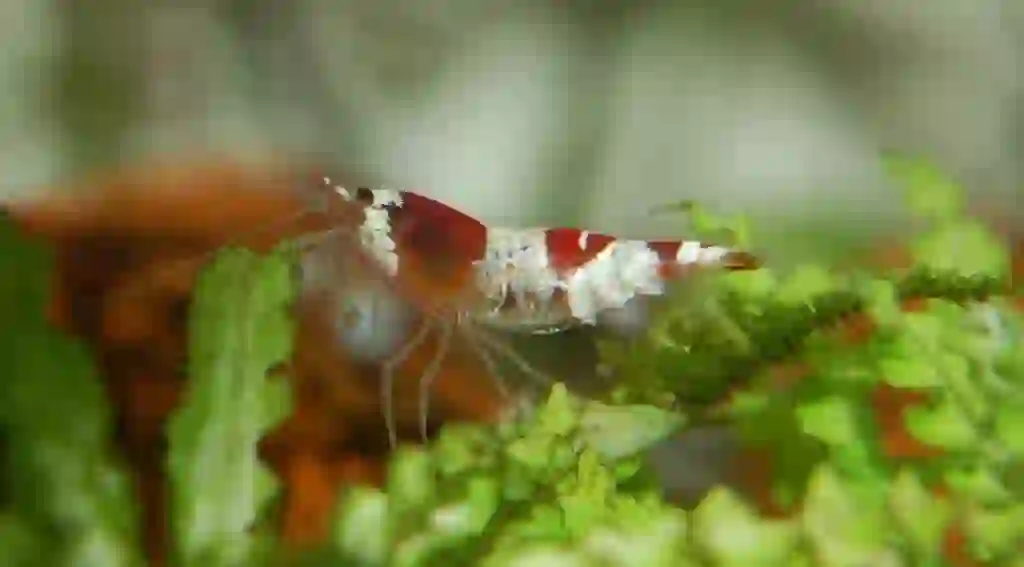
出典:https://pixabay.com/images/id-2579959/

出典:https://pixabay.com/images/id-164479/

Help Enrich Our Animalbook.jp with Your Media!
We are constantly looking to expand and enrich our Animalbook.jp with amazing photos and videos of animals. If you have any media that you'd like to share, please contribute and help us showcase the beauty and diversity of the animal kingdom. Your submissions will be credited and featured in our encyclopedia, reaching a wide audience of animal lovers.
















